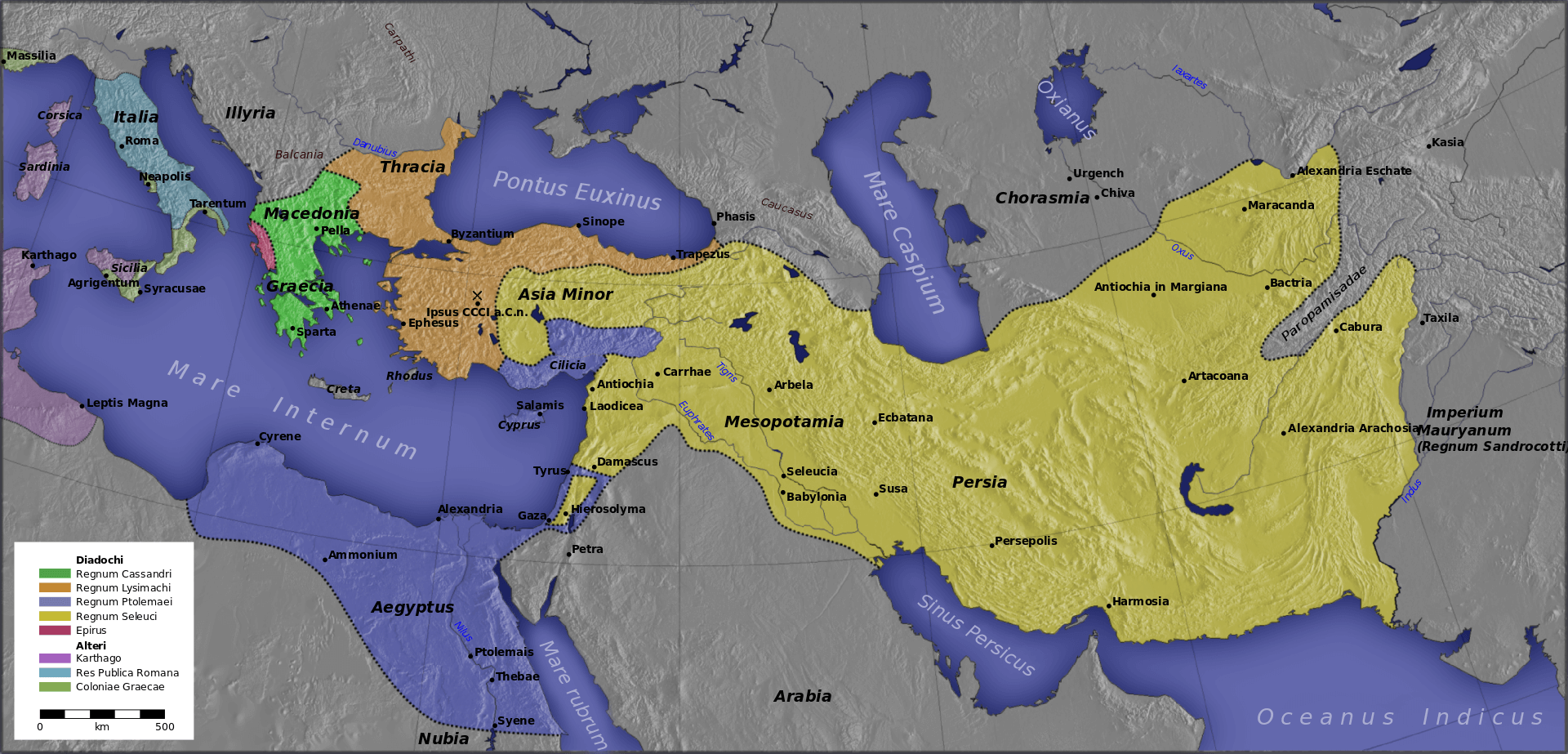Who were Seleucids? Who founded Seleucid Empire? What is the history of Seleucids? Information about Seleucid Empire.
Seleucids; dynasty founded in Syria by Seleucus I Nicator, one of the ablest generals of Alexander the Great and eventually a successor to a large part of Alexander’s divided empire. The Seleucids ruled from 312 to 64 b. c. As his share of the empire, Seleucus I received in 321 the satrapy of Babylon, from which he conquered eastward as far as the Indus River by 302. In 301, in alliance with Lysimachus, a fellow-successor of Alexander, Seleucus defeated Antigonus I, King of Macedonia and another general and successor of AIexander, at Ipsus. In the division of the Macedonian empire that followed the death of Antigonus at Ipsus, Seleucus added Syria and the eastem part of Asia Minör to his domain.
In northern Syria he established Antioch, named after his father, which became the capital of the kingdom. He also founded several cities named Seleucia after himself, chief among which was Seleucia-on-the-Tigris, which served as the capital of the eastern satrapies. These cities were peopled by Macedonian and Greek colonists, enjoyed civic independence, and developed into important centers for the diffusion of Greek language and culture. Educated Syrians began to study Greek and write in it, but the countryside retained its old speech and way of life. Next to colonization, the establishment of a Standard calendar for western Asia was perhaps the greatest achievement of the period. The year 312 b.c. is reckoned as marking the birth of the Syrian monarchy and the starting point of the Seleucid era.

Map of the Seleucid Empire (in yellow) (Source : wikipedia.org)
Successors of Seleucus.
The kingdom established by Seleucus, who died in 280, was hardly ever at rest. His immediate successors, Antiochus I Soter and Antiochus II Theos, fought indecisively against Ptolemy II, King of Egypt and son of another general and successor of Alexander, for the possession of Palestine. Antiochus III the Great, during his long reign from 223 to 187, reconquered the Iranian territory as far as India and carried Seleucid arms almost to the Egyptian border. But his attempt to conquer Greece brought him into conflict with the growing power of Rome, to which he was forced to cede all the territory beyond the Taurus Mountains and to pay a heavy war indemnity. In his wars he made effcctive use of the elephant. This animal became a Seleucid emblem and figured on the coins. Apamea-on-the-Orontes served as a depot where war elephants, mostly imported from India, were bred and trained.
Of the remaining sovereigns—there were about 26 in all—one of the best known was Antiochus IV Epiphanes, whose invasion of Egypt in 169 resulted in the occupation of its lower part. As an enthusiastic champion of Hellenism, he tried to impose its culture upon his subjects, particularly the Jews of Palestine, thus provoking the Wars of the Maccabees (167-160). The spoils of the Temple of Jerusalem helped to finance his lavish program of public buildings.
Among his 2d century successors, Antiochus V Eupator was a feeble and corrupt ruler, Alexander Balas was dissolute, and Demetrius II Nicator could not hold his own against the Parthians. Antiochus VII Sidetes restored the royal line and carried on war against the Jews, who were enjoying a period of independence under the Maccabees.
The Seleucid state had become so weak by the 1st century that Tigranes I, King of Armenia, ventured to invade Syria and penetrated as far south as Acre in 69. Five years later Pompey the Great, the Roman general, appeared on the scene, overthrew Antiochus XIII Asiaticus, and organized Syria into a Roman province. By that time the regions of Bactria, Parthia, Armenia, and Judaea had been lost.
Economy and Government.
Syria was the backbone of the Seleucid kingdom. Syrian trade, both domestic and foreign, was of great consequence to the entire realm and to its population. It was the Seleucid policy to promote commercial relations with the Greco-Roman world. The main inland highways were guarded by chains of strong colonies, which also provided adequate halts for the caravaners. Dura-Europos, founded around 300 by Seleucus I on the desert road between Syria and Mesopotamia, was such a colony and soon developed from a strong fortress into an important emporium.
The political institutions of the Seleucid realm were a strange mixture of Greek and Middle Eastern elements. The king not only enjoyed absolute power, but also was surrounded by a divine halo of Oriental origin. Some of the late kings, like Balas, assumed Semitic titles. The language of the court was, of course, Greek. Both army and navy were the king’s. In its early stages the army consisted of Macedonians and Greeks recraited from the realm. Its nucleus was the phalanx. While the fleet at no time played a decisive part in any of the recorded battles, it performed a useful function in cooperating with the active army and in protecting military transport. The fleet was manned mostly by Phoenicians.
mavi